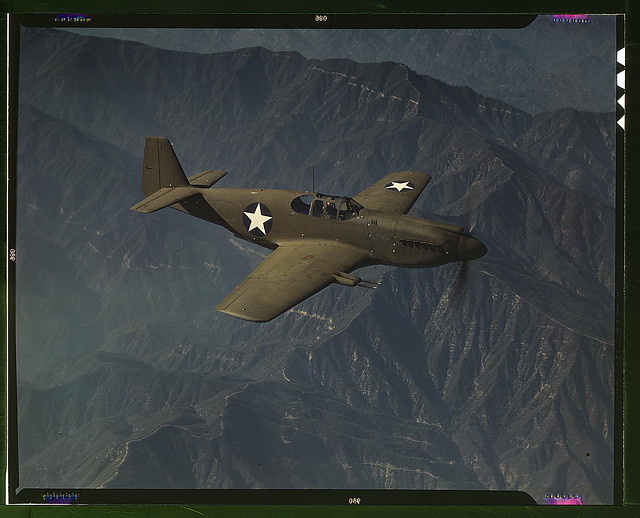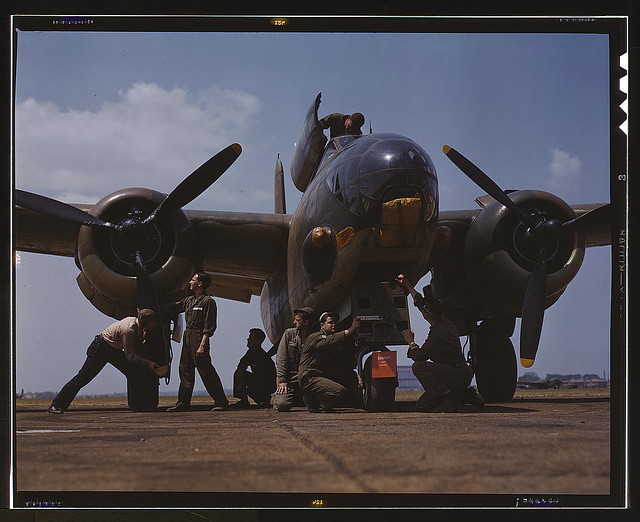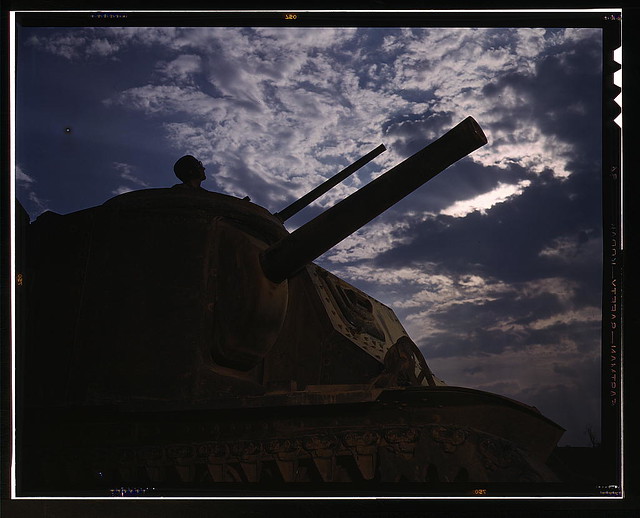.

16-inch coast artillery gun, Ft. Story, Virginia: photo by Alfred T. Palmer, March 1942
Angry men and furious machines
Swarm from the little blue of the horizon
To the great blue of the middle height.
Men scatter throughout the clouds.
The wheels are too large for any noise.

P-51 "Mustang" fighter in flight, Inglewood, California. The "Mustang", built by North American Aviation, Incorporated, is the only American-built fighter used by the Royal Air Force of Great Britain: photo by Alfred T. Palmer, October 1942

Servicing an A-20 bomber, Langley Field, Virginia: photo by Alfred T. Palmer, July 1942

The crew of an M-3 tank learn all the ways of causing trouble for the Axis with a 75-mm. gun, a 37-mm. gun and four machine guns, Fort Knox, Ky. The Fort Knox school for tank crews has graduated many men who are now ready to meet the enemy on our far flung battle lines -- and on more than equal terms: photo by Alfred T. Palmer, June 1942
Wallace Stevens: Dutch Graves in Bucks County (excerpt), January 1943, from Transports of Summer, 1947
Photos by Alfred T. Palmer from Farm Security Administration/Office of War Information Collection, Library of Congress



2 comments:
"Men scatter throughout the clouds.
The wheels are too large for any noise."
That's so great.
This may be indicated in something I've missed, but are you taking the captions from the photos verbatim from a source or writing or rewriting them?
Curtis,
I made the decision at certain point to render the captions exactly as they are in the files. This seemed necessary once one entered the OWI period, in which the propaganda aspect of the motive is approximately equal to the totality of the motive. In the FSA years (1935 to mid-1942) I'm pretty sure the captions were written by the photographers themselves. Whether that remains the case with the '42-'43 "war effort" work of Palmer, Feininger and others remains to be seen. So whether Palmer (or Feininger, et al.), or some intermediary editor, was responsible for the later "patriotic" captions, it does seem that they become a part of the total "message" of the work as we now have it. Thus I've been trying to reproduce them faithfully and verbatim.
Post a Comment